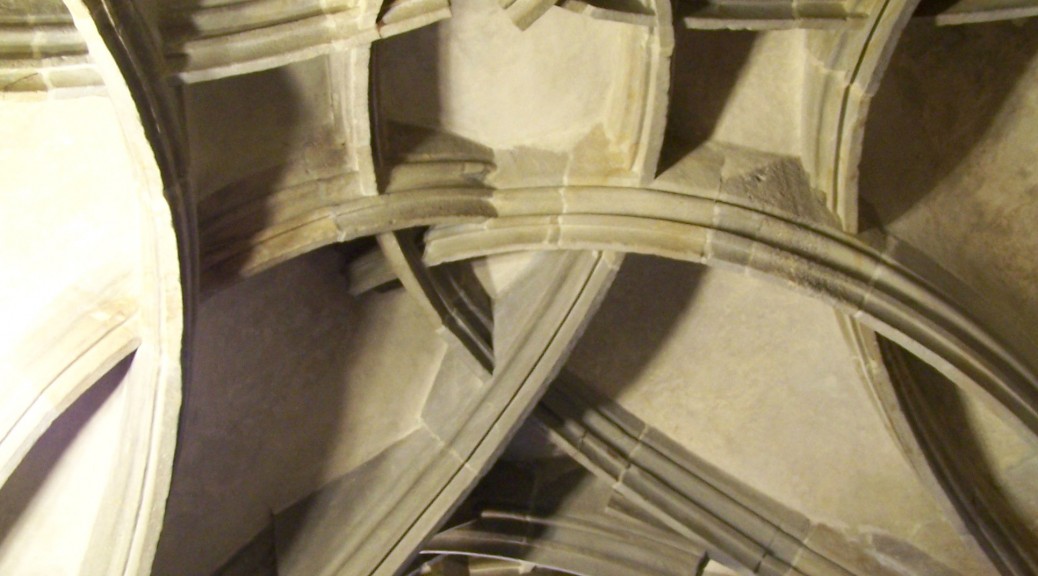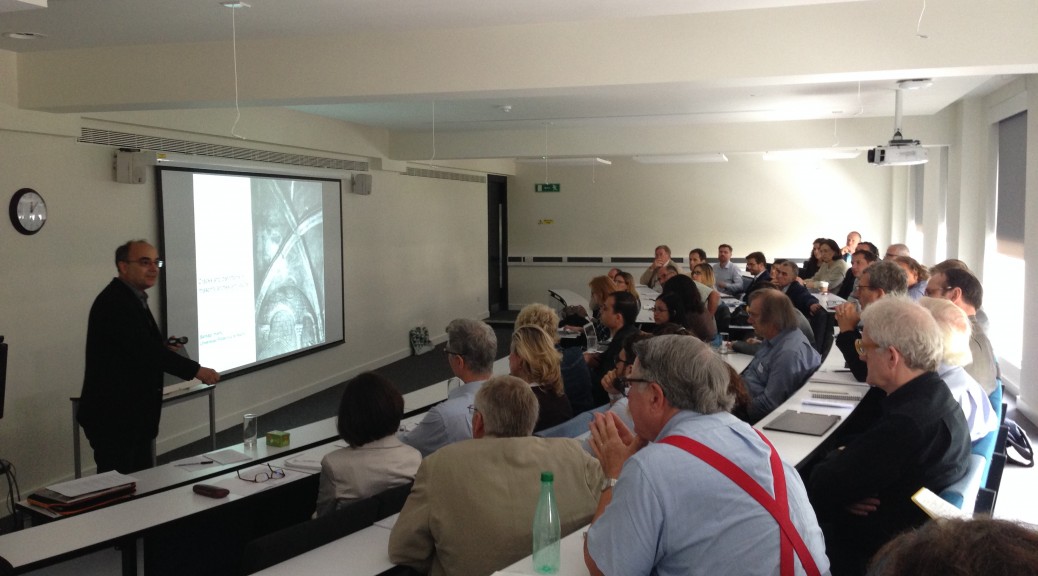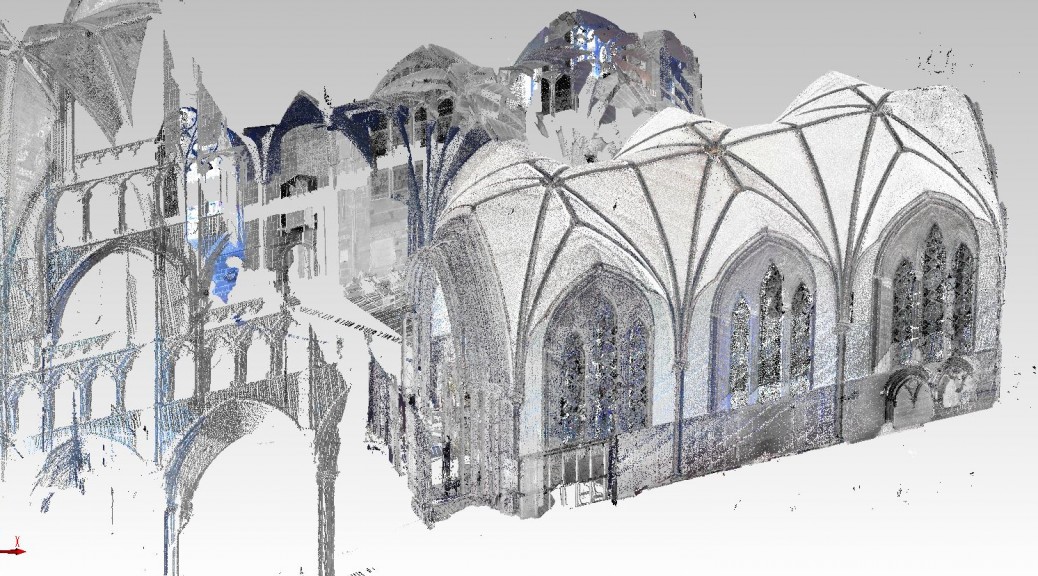On Monday 1 Feb Nick and Alex went to the University of York to an event organised by Professor Tim Ayers, which brought together three leading experts on European late Gothic to discuss issues of vaulting, specifically international transfer of ideas and the design processes involved. The opening seminar was led by Paul Crossley, Professor Emeritus of the Courtauld Institute and Dr Zoë Opačić of Birkbeck College, offering a reflection on Professor Crossley’s work on late Gothic in Eastern Europe. It was encouraging to hear one of our case studies, Wells Cathedral, described as a clear influence on the work of Peter Parler in Prague Cathedral and discussion of Lincoln Cathedral’s tierceron vaults as an apparent influence on Polish examples of a similar form, for example the Cistercian church of Pelplin. We’ve already identified Lincoln’s nave as an influence on the vaults we’ve scanned at Chester, which share the feature of a ridge rib which does not extend to the side walls. Stuart Harrison was also in the audience and keen to share with us his discoveries about the plan of the now-lost east end of Lincoln Cathedral, which will be published in a forthcoming issue of the Journal of the British Archaeological Association. We can’t wait!
Next, Professor Norbert Nußbaum from the University of Cologne gave a lecture entitled ‘Benedikt Ried’s Vaults in Prague Castle and the question of Formative Inventiveness’. Professor Nußbaum is co-author with Sabine Lepsky of Das Gotische Gewölbe (Darmstadt, 1999), a foundational text for the study of Gothic vaulting. Using a series of digital models, Professor Nußbaum showed how the seemingly chaotic designs of the Rider Staircase and the Chancery involved a series of geometrical manipulations based on a two-dimensional plan which could be shifted sideways across a grid or rotated to deconstruct its original logic. He argued that these feats of architectural ingenuity could be compared with the contemporary phenomenon of the ‘Wunderkammer’ (cabinet of curiosities) and were intended to provoke the question ‘How did they do that?’ These were highly sophisticated designs demonstrating the learning of an architect sufficiently confident in his knowledge of the rules to be able to break them – but in contrast to the architects of the Italian Renaissance, the ideas were presented in built form rather than in a textual treatise.
We came away very excited by both the presentation and by the ideas involved, particularly the methodology used to discover the results and the use of colour in the digital models to make clear the hypothetical process enabling the vault design to be accomplished. We saw some clear parallels between the geometries discussed and the vaults we have scanned, but also some significant differences which we look forward to exploring further.
Further information about the event is available here: https://www.york.ac.uk/history-of-art/news-and-events/events/2016/modelling-vaults/.


